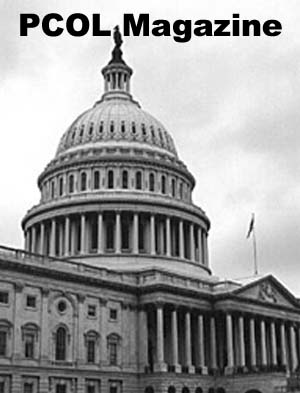
President Bush signs Nanotechnology Bill sponsored by El Salvador RPCV Mike Honda
President Signs Nanotechnology Bill
President Bush has signed into law a bill authorizing $3,677.7 million for federal research on nanotechnology over the next four years. Under this legislation the "21st Century Nanotechnology Research and Development Act," the National Science Foundation, Department of Energy, NASA, NIST, and EPA would augment, in some cases dramatically, their support of nanotechnology R&D programs from FY 2005 through FY 2007.
Intended to ensure "United States global leadership in the development and application of nanotechnology," the bill that made its way to President Bush's desk for the December 3 Oval Office ceremony was the result of bipartisan cooperation on both sides of the Capitol and both ends of Pennsylvania Avenue. Introduced by Senator Ron Wyden (D-OR) on January 16, and Rep. Sherwood Boehlert (R-NY) and Rep. Mike Honda (D-CA) on February 13, the two bills had the support of a wide range of ideologically differing Members of Congress. The House passed its bill on May 7 by a vote of 405-19; the Senate its version on November 18 by Unanimous Consent. Within two days of the Senate vote, Boehlert secured the bill's final passage on the House floor by voice vote.
The legislation, P.L. 108-153, while not providing the actual funding, is an important signal of the Bush Administration and Congress's support for nanotechnology. Said Boehlert, "The U.S. is the leader in nanotechnology and must remain so as this new field starts remaking the marketplace. The nanotechnology program will be a model of government, university, industry cooperation, and of coordination, interdisciplinary research and public involvement." When introducing his bill, Wyden said "Our country's National Nanotechnology Initiative is a step in the right direction. This Nation has already committed substantial funds to nanotechnology research and development in the coming years. But funding is not enough. There must be careful planning to make sure that money is used for sound science over the long-term. That is the reason for the legislation I am issuing today. The strategic planning it prescribes will ensure that scientists get the support they need to realize nanotechnology's greatest potential." The Bush Administration identifies nanotechnology as a one of its "top" R&D priorities, with nanotechnology research funding increased by 83% since 2001.
This bill authorizes, or sets spending parameters for, five government departments or agencies over the next four fiscal years. Under its provisions, NSF would receive $1,734 million, or 47% of the total funds if they were appropriated in full. DOE would receive $1,459 million, or 40% of the money. NIST would receive 8% of the total authorization, with NASA 4% and EPA 1%. If actually realized, appropriated funding at the authorized levels would mean large increases. NSF will receive $254 million for Nanoscale Science and Engineering this year. In FY2005 the authorization figure (assuming comparability) is $385 million; in FY 2007 the figure is set at $476 million.
The authorization figures are just one section of this ten-section law. Other provisions establish various mechanisms to coordinate and promote R&D through the National Science and Technology Council (see http://www.ostp.gov/NSTC/html/NSTC_Home.html), a coordination office with full time staff, an industry/academic advisory panel, and external reviews through the National Academy of Sciences. A series of reports are to be prepared to monitor progress. In addition, a preparedness center will examine societal impacts of nanotechnology, and another center will conduct and disseminate research on new manufacturing technologies.
###############
Richard M. Jones
Media and Government Relations Division
The American Institute of Physics
fyi@aip.org http://www.aip.org/gov
(301) 209-3094
